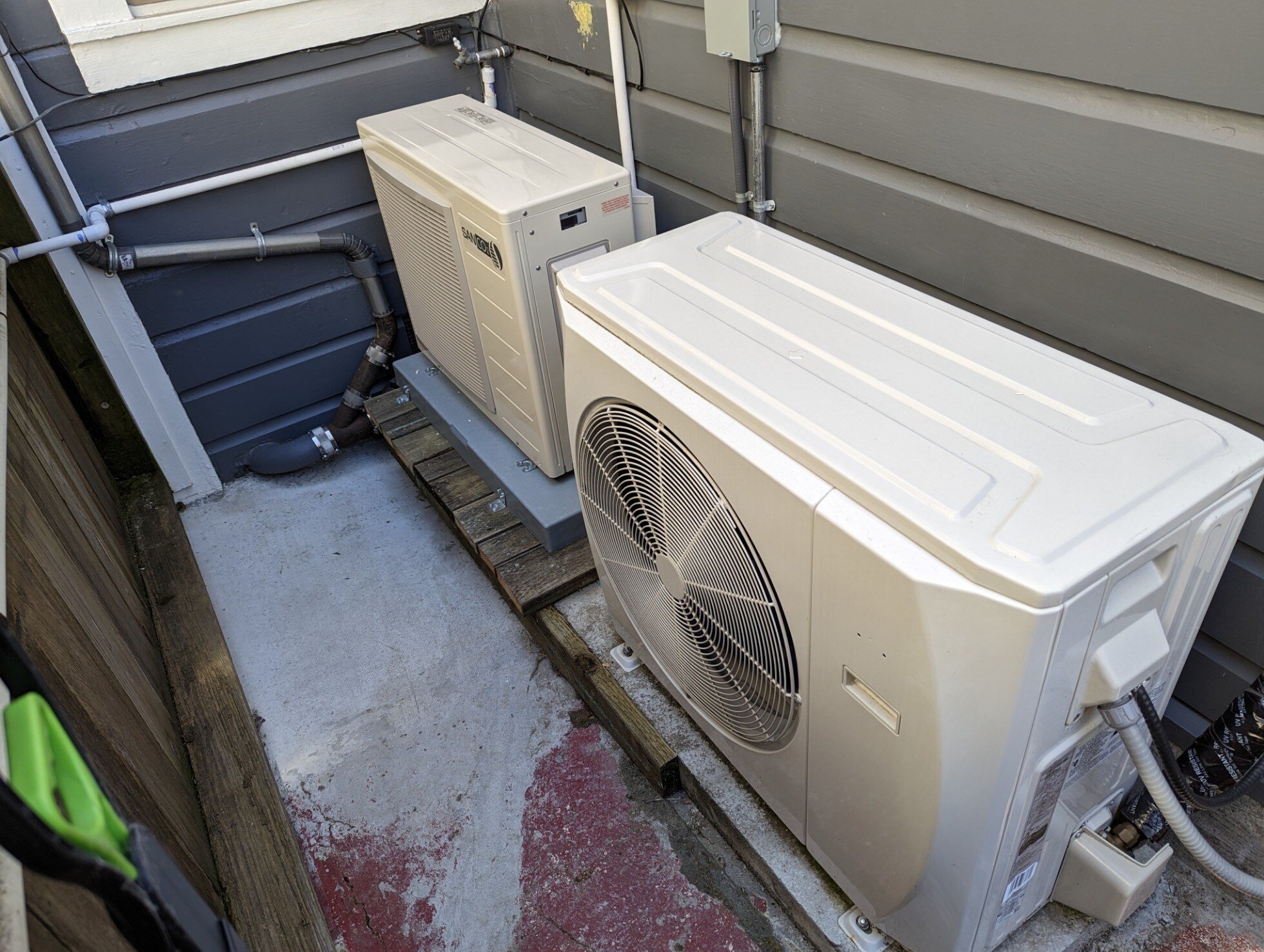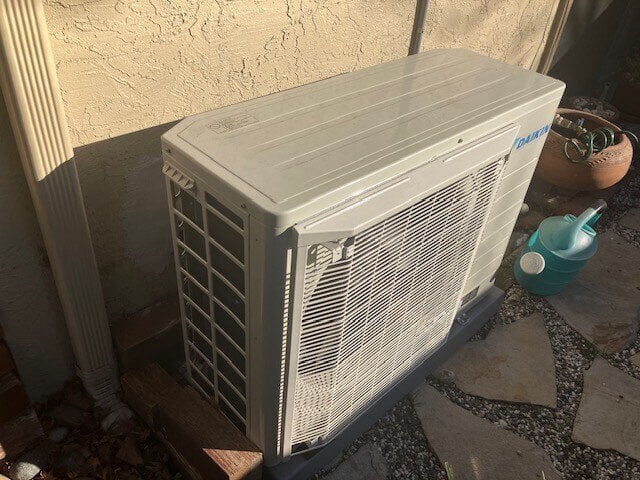Are Heat Pumps Effective in Cold Weather?
Do heat pumps still work in cold weather? We often hear this question from homeowners who are worried heat pumps stop working when temperatures drop below freezing.
Our answer is clear: even below 0 degrees Fahrenheit, heat pumps operate with more than double the efficiency of gas or standard electric heating. If you're concerned about a heat pump's ability to keep your home comfortable during cold weather, don't be.
Innovative heat pump technology can handle freezing winters while heating your home with significantly less electricity compared to conventional heating options.
Air-source heat pumps function remarkably well during winter—even in extremely cold climates. Heat pumps have been tested during frigid conditions in Minnesota and see frequent use in northern countries like Finland and Norway.

In this article, we will discuss why heat pumps function well in cold weather and the reasons behind their success. Use these quick links to navigate:
- Heat Pumps Can Handle Cold Weather
- How People Became Misinformed About Heat Pumps
- Why New Heat Pumps Perform Better in Winter
- At What Temperature Do Heat Pumps Become Inefficient?
- How Ductless Heat Pumps Perform in Cold Weather
1. Heat Pumps Can Handle Cold Weather
Heat pumps are very effective in freezing conditions. According to the U.S. Department of Energy, recent advancements in heat pump technology have made them an excellent option for homes in colder regions.
The Department of Energy found that heat pumps can provide more than three times the amount of heat energy for the electricity they consume compared to traditional heating systems. This is because they transfer existing heat energy instead of generating new heat energy. Heat pumps effectively heat homes even in below-freezing temperatures.
What Does the Research Say?
In 2018, researchers from the Center for Energy and Environment conducted a field test of air-source heat pumps in Minnesota, a state known for its cold winters. Researchers tested whether air-source heat pumps were effective in Minnesota's severe winters and if using them resulted in energy savings. Heat pumps passed both tests easily.
- Heat pumps successfully heated the test homes throughout the winter, including temperatures below freezing,
- Data revealed that Minnesota residents could reduce their heating energy consumption by 35% to 56% by installing advanced heat pumps.
This substantial efficiency margin is just one piece of evidence in a mounting pile indicating that heat pumps are suitable for cold climates. On top of that, some programs in specific regions can help you get a heat pump with no upfront cost, and you may even qualify for heat pump tax credits and rebates.
QuitCarbon was featured in a recent Redfin article about how heat pumps help with winter home comfort: Dealing with the Cold: Top Winter Home Improvement Projects for You
2. How people became misinformed about heat pumps
It's clear that modern heat pumps are effective in cold temperatures, so why do so many people believe that heat pumps won't function properly in extremely cold weather? People who say heat pumps don't work in extreme cold are using outdated and incorrect information based on results from 30-40 years ago.
Back in the 1980s, the first generation of heat pumps performed well in moderate temperatures but faced difficulties when temperatures dropped below freezing. As a result, most early heat pumps were installed in areas with a temperate climate. Heat pumps were unfairly saddled with a reputation for not handling cold temperatures.
Even as the Cabbage Patch Kids fade away, the internet is full of outdated and inaccurate information about how heat pumps operate in cold weather. This is also why many people think that heat pumps won't keep their houses warm enough. Even some HVAC companies incorrectly continue to believe that heat pumps don't work in the cold.
When you're looking for a new HVAC system, don't rely on bad information. Heat pumps have significantly improved since their invention; the new cold climate and high-performance models are more than capable of handling whatever winter can throw at them—even in large, old houses.
3. Why New Heat Pumps Perform Better in Winter
To understand why heat pumps now work in extremely cold conditions, it's worth examining why heat pumps made improvements over the last 40 years.
First, we have to explain what a heat pump is. A heat pump serves as a complete replacement for your HVAC system—it can heat, cool, filter, and dehumidify your air, all while using far less energy than a traditional AC or heating system like a furnace or baseboard. A heat pump functions by transferring heat energy. In the winter, it takes heat from outside your home and moves it inside. In the summer, it reverses the process, moving heat energy from inside your home to the outside.
Since moving heat requires less fuel than producing heat, the heat pump is incredibly efficient, using far less energy than standard heating and cooling systems. Heat pumps can reduce your energy use by up to 50% or more. They also significantly reduce carbon emissions through efficiency improvements and can nearly eliminate emissions when combined with clean energy like solar panels.
Which Heat Pump Parts Contribute to Improved Efficiency?
New heat pumps are superior to old ones because the individual components have undergone significant upgrades. The basic design of the heat pump is the same, but These improvements have made a considerable difference in how heat pumps perform during the winter.
Here's how modern, high-performance heat pumps have improved:
- Redesigned compressors - The compressor is what circulates the refrigerant that moves heat energy from outside to inside. New heat pump compressors can now automatically adjust their speed and energy consumption when the temperature changes. They work harder when needed (such as on extremely cold days) and then scale back when temperatures are moderate. This variable compressor technology was not commercially available in heat pumps a decade ago. It's now a game-changer that makes heat pumps exceptional at sub-zero temperatures.
- Improved motors - Improved motors, such as electronically commutated motors (ECMs), allow for better control over fan speed and increased energy efficiency. The new generation of motors enhances performance in a wide range of temperatures and conditions.
- Super-efficient fans - Heat pumps have fans that move air through the coils. New variable-speed fans handle common winter challenges like restricted ducts and dirty filters much better.
- Enhanced coil designs - Modern heat pumps use grooved-copper tubing. Since the new grooved tubing has a larger surface area than the older smooth tubing, heat pumps can exchange heat with the outside environment much more efficiently than before.
- Defrosting mechanisms - Newer heat pumps come with intelligent defrosting mechanisms that allow them to defrost themselves efficiently without compromising the overall performance of the system. Even in icy conditions, this feature helps ensure that the heat pump continues to function effectively.
4. At What Temperature Do Heat Pumps Become Inefficient?
You may have heard that heat pumps don't work or become inefficient at below-freezing temperatures. That's no longer the case. Modern air-source heat pumps can work up to around -15 degrees Fahrenheit. If you live in an area where temperatures regularly go below -15 degrees Fahrenheit, you can add a secondary heating system that can supplement the heat pump. However, most people in the contiguous United States won't even need to use their supplementary heating system. If you're dealing with extreme cold, be sure to let us know so we can design a plan that works best for your home.
For those who appreciate the finer details, most heat pumps come with recommendations for operating temperature. While most new models operate well below 0 degrees Fahrenheit, you can pick which one works best for you.
5. How Ductless Heat Pumps Perform in Cold Weather
Ductless or "mini-split" heat pumps are smaller and easy-to-install heat pumps that work well in homes with "non-ducted" heating systems like hot water heated homes, radiant panels, or space heaters. Similar to standard air-source heat pumps, ductless heat pumps have an outdoor compressor and an indoor air-handling unit. They are great for setting temperatures in individual rooms.
While they are smaller than air-source heat pumps, ductless heat pumps still work great in cold weather. Nearly all ductless heat pumps from the last 10 years operate well in temperatures below freezing. Some models work great up to -22 degrees Fahrenheit.
Heat pumps have taken vast strides since their early days. Thanks to numerous technological advancements, they are now highly efficient and effective even in cold climates. As a result, homeowners in areas with an abundance of cold weather can enjoy comfortable indoor temperatures year-round while also reducing their carbon footprint and energy costs.
Due to the tax credits and rebates in the Inflation Reduction Act, installing a heat pump is more affordable than ever. All homeowners can enjoy a tax credit equal to 30% of total project costs up to $2,000. Under the new system, home builders are also eligible for extended tax credits if they comply with ENERGY STAR® requirements, which include heat pump installation.
Want to learn more about heat pumps? Check out our guide to the pros and cons of heat pumps for in-depth content on the topic.



